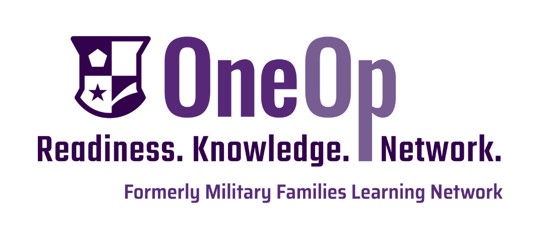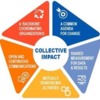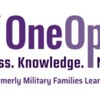By Anna Peterson
Summary
- Military-connected populations, including military families, face unique needs and barriers in finding services and care for family members.
- Extension educators/agents who serve military-connected populations can deploy three strategies to better meet their needs: 1) use the Social Determinants of Health model; 2) build collaborations with others; and 3) use a care coordination tool.
Introduction
The needs of the military-connected population (e.g., service members, veterans, families, and caregivers) are often intricate and complicated. Many military families face::
- High rates of unemployment or underemployment for military spouses
- High costs or inaccessibility to adequate childcare
- Increased cost of living in locations where they are stationed
- Seen wounds (eg., combat physical injuries) and unseen wounds (e.g., PTSD) of service
- Complicated health care needs and associated costs
- Food insecurity due to low salaries and inflation
Those who work with military families often find serving the military and veteran community complicated for these reasons:
- Military-connected populations do not always feel comfortable or safe to reach out for support.
- Services might not exist where they live such as in geographically dispersed or rural places.
- Eligibility requirements for service may vary from individual to individual.
- Most organizations offer just a few services and not “whole health” support.
Individuals and families end up spending their valuable time and resources trying to:
- better understand their eligibility for benefits and services
- learn how and when to apply to programs
- navigate between different providers, often in different locations
Ultimately this is not producing the best health outcomes for those involved.
Extension Centers can take an active part in helping this population. Here are three strategies that exceptional organizations share in common for delivering accessible services:
- Screen for needs a client has using a Social Determinants of Health (SDoH) assessment and assist the individual in connecting to relevant services. The PRAPARE Screening Tool is one example of an assessment tool.
- Address gaps in service by working collaboratively with providers across the community and building a shared knowledge of which services are available from each stakeholder, perhaps with a co-created resource directory.
- Use a care coordination tool and data to ensure the outcomes of referrals for military-connected are meeting their needs completely. Unite Us is a care coordination tool that can be used at no cost by community based organizations.
Learn about and Screen for SDoH (Social Determinants of Health)
In order to improve health outcomes for military-connected populations, Extension needs to shift how we approach the screening for needs of service members, veterans, their families, and caregivers.
A recent study Social Determinants of Health Data Sharing at the Community Level examines the environmental conditions that impact a population’s health. These conditions are impacted by the context in which people are born, grow up in, work, and live, and include factors, like income, education, employment, housing, social support, and transportation.
The study goes on to say:
“…providers are being encouraged to screen for these social determinants of health (SDOH) so that underlying social needs and risk factors are uncovered and addressed. Doing so requires communication and coordination between social service providers and health systems, which traditionally function independently. New community networks have emerged to facilitate these cross-sector connections.”
Consider the military-connected populations you work with as a service provider and their unique needs as compared to the civilian population. Do you ask clients if they served in the military and then do you thank them for their service? This is just one step towards using the Social Determinants of Health.
Build Partnerships and Work Collaboratively
There is a growing need and interest to create coordinated social care networks from multiple stakeholders such as state government, community-based organizations, health information exchanges, health care providers and plans, and philanthropy.
Meeting the Mission and Goals of Collective Impact
One way of thinking about this work is called “collective impact”. Collective impact is a framework that can assist in creating lasting solutions to social problems on a large-scale. The principles to achieve collective impact are organizations coordinating their efforts and working together to (1) set shared clearly defined goals, (2) commit to doing mutually reinforcing activities, (3) communicate regularly, and (4) share common understanding of data and measurements.
There are many organizations that have been working on collective impact to improve the capacity, efficiency, and effectiveness of services in the military and veteran space. For example, America Serves the Institute for Veterans and Military Families, the Bob Woodruff Foundation, and more.
Use a Care Coordination Tool
The goal really seems clear and simple: partner with communities to deliver a person-centered care coordination platform. This hands-on community engagement process ensures services are seamlessly delivered to the people who need them most. Being committed to improving people’s lives needs to start with working on building community relationships and connecting our work. There are opportunities for joining these networks at no cost, for example Unite Us.
In conclusion, military and veteran serving organizations who are looking to provide a wider impact on health, wellness and readiness of the military-connected communities should explore coordinated care networks as the new model of care across the sector.
References — Important Links
USC Student Affairs. (2018). Meeting the Mission and Goals with Collective Impact. University of Southern California.
ASPE. (2021; March 30). Social Determinants of Health Data Sharing at the Community Level. Office of the Assistant Secretary for Planning and Evaluation, the U. S. Department of Health and Human Services.
PREPARE.org. (2022). The PRAPARE Screening Tool.
UniteUs.com (2023). Social Determinants of Health Technology, Powered by the Community.
Allison Alstrin, guest blogger for OneOp Family Transitions, worked with military and veteran organizations in collective impact in Minnesota for 5 years and is still engaged with a national group of collaborators who are always working to find better ways to serve. In her role at Unite Us, she is helping organizations use tools which support collective impact and improving Social Determinant of Health outcomes. Allison can be reached @ allison.alstrin@uniteus.com.
Anna Peterson, Program Coordinator, OneOp Family Transitions





Comments (0)